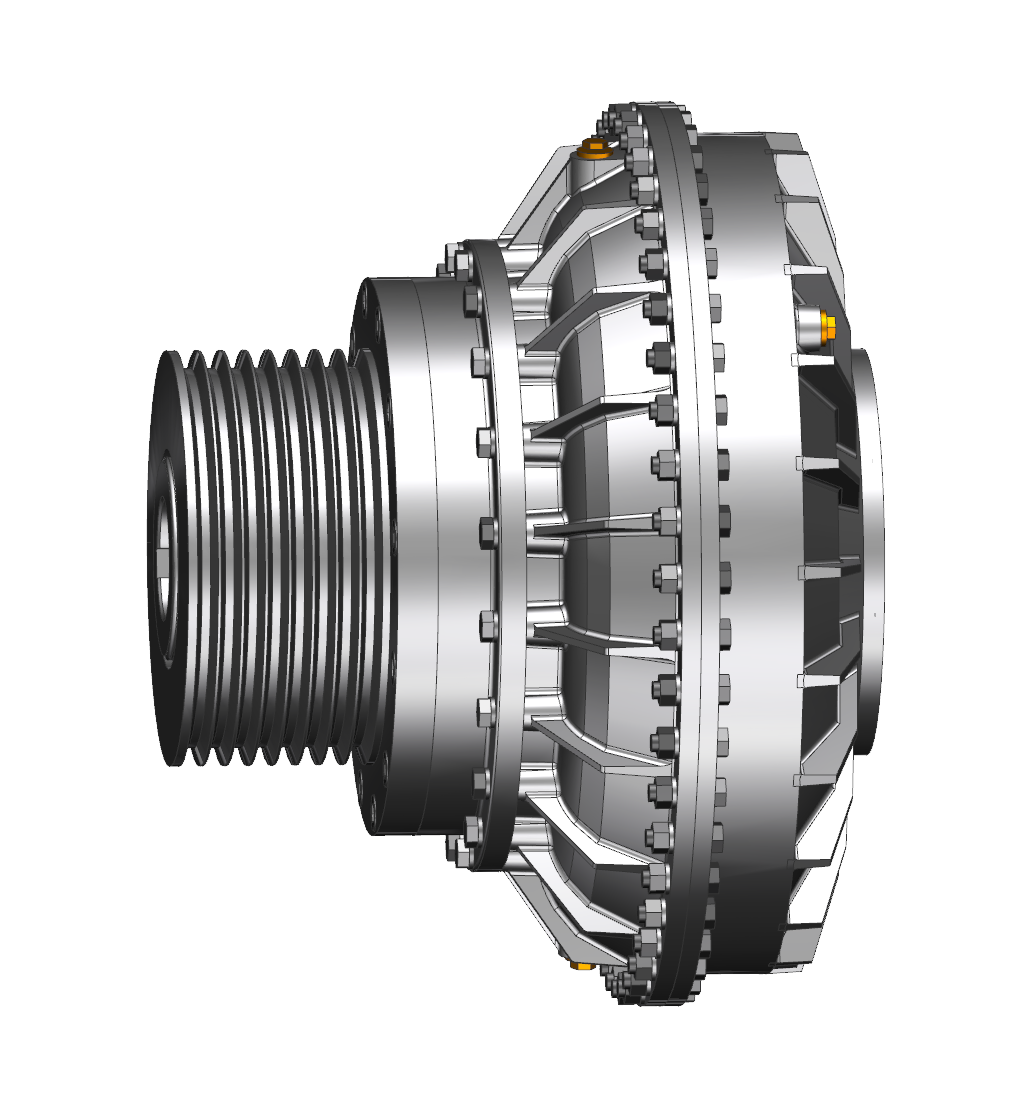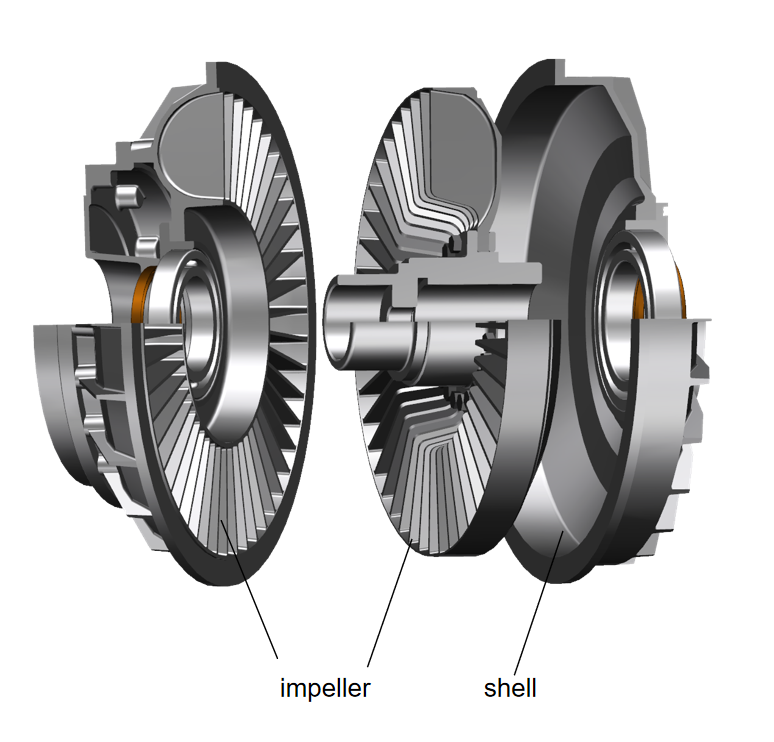
How does a hydraulic coupling work?
2024-01-09 12:06How does a hydraulic coupling work?
A fluid coupling is a commonly used transmission device used to connect two rotating shafts. Hydrocoupling transmits power through the flow of liquid and features smooth , continuously variable speeds. Hydrocoupling transmits power through the flow of liquid and features smooth is mainly composed of a pump wheel, a turbine and a hydraulic transmission medium.

The working principle of the hydraulic coupling is as follows:
1. Pump impeller: The pump impeller is the drive shaft of the constant or controlled filling fluid coupling, which generates power through the rotation of the engine. The pump impeller is equipped with a series of blades. When the pump impeller rotates, the blades push the liquid outward from the center.
2. Turbine: The turbine is the driven shaft of theconstant or controlled filling fluid coupling. It is connected to the equipment or machinery that requires transmission power. The turbine is also equipped with a series of blades. When the liquid pushes the blades of the pump impeller, the blades of the turbine are impacted by the liquid. And start spinning.
3. Hydraulic transmission medium: The hydraulic transmission medium is the liquid medium in the constant or controlled filling fluid coupling, usually hydraulic oil. When the liquid is pushed from the blades of the pump wheel to the blades of the turbine, the kinetic energy of the liquid is converted into the kinetic energy of the turbine, thus Realized the transmission of power.

The working process of a hydraulic coupling can be divided into three stages:
1. Starting stage: When the engine starts, the liquid begins to be pushed by the blades of the pump wheel, and the turbine begins to rotate. At this stage, the transmission efficiency of the fluid drive coupling is low because the flow of the liquid is not sufficient.
2. Acceleration stage: As the flow of liquid gradually strengthens, the rotation speed of the turbine also gradually increases. At this stage, the transmission efficiency of the fluid drive coupling gradually increases, and the power transmission becomes more stable.
3. Stable stage: When the liquid flow reaches a certain stable state, the turbine speed will be consistent with the pump wheel speed. At this stage, the transmission efficiency of the fluid drive coupling reaches its highest level and the power transmission is very stable.
The fluid couplings have the following advantages:
1. Smooth continuously variable transmission: The hydrocoupling can achieve smooth continuously variable transmission without the need for a clutch or transmission to operate, making driving more comfortable.
2. Smooth starting: The starting process of the hydrocoupling is smooth and impact-free, which is of great benefit to the starting of mechanical equipment and the driver's driving experience.
3. Stable energy transfer: The hydrocoupling can automatically adjust the flow of liquid according to changes in load, thereby achieving stable power transfer.
4. Strong load-bearing capacity: The hydrocoupling can withstand large torque and impact force, and is suitable for various heavy-load conditions.
To sum up, a constant or controlled filling fluid coupling is a transmission device that transmits power through liquid flow. It has the advantages of smooth stepless speed change, smooth starting, stable energy transmission and strong load-bearing capacity. It is widely used in various mechanical equipment and automobiles to provide drivers with a comfortable driving experience.
